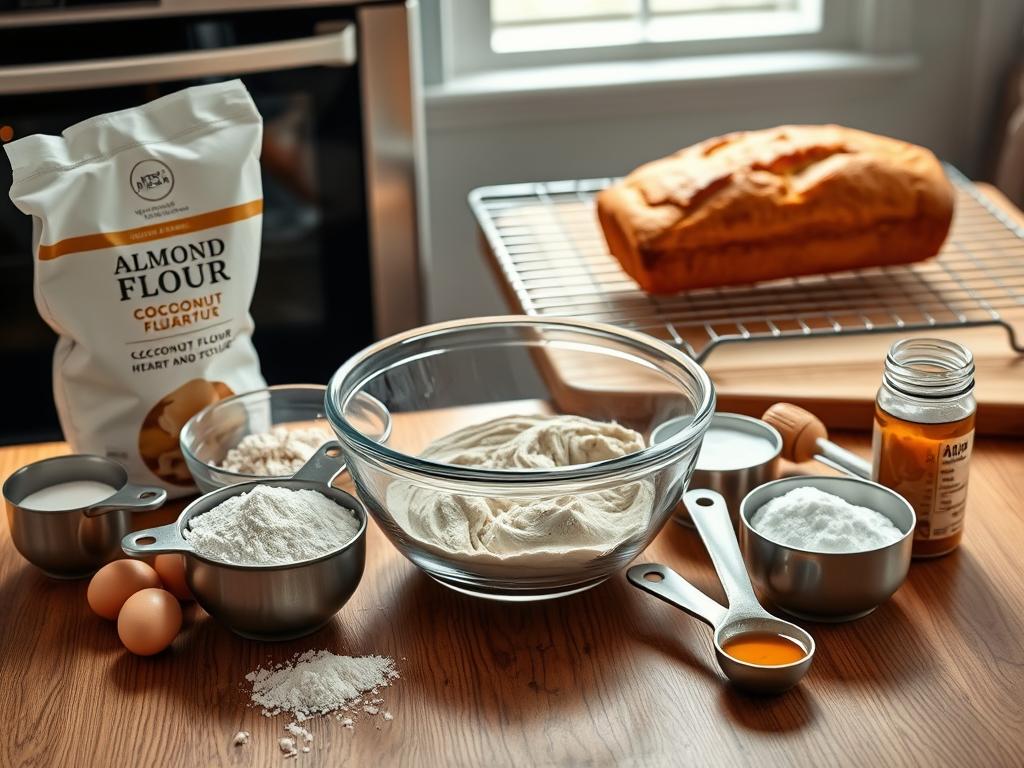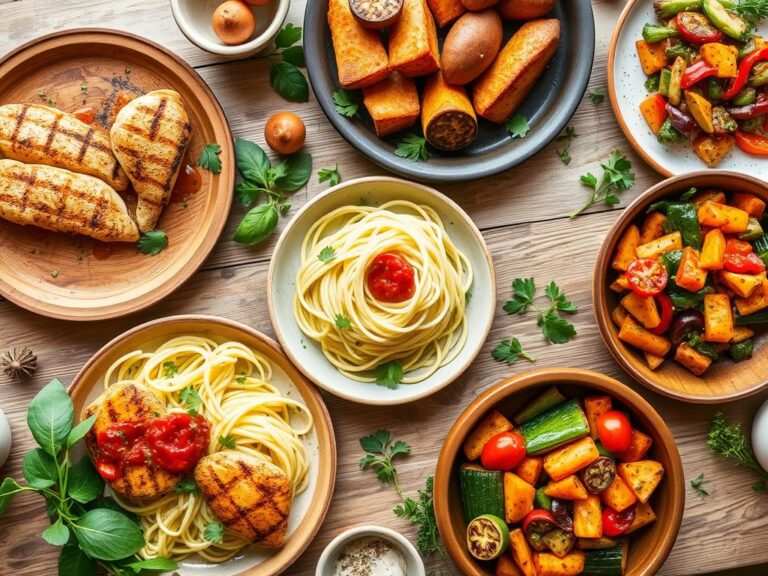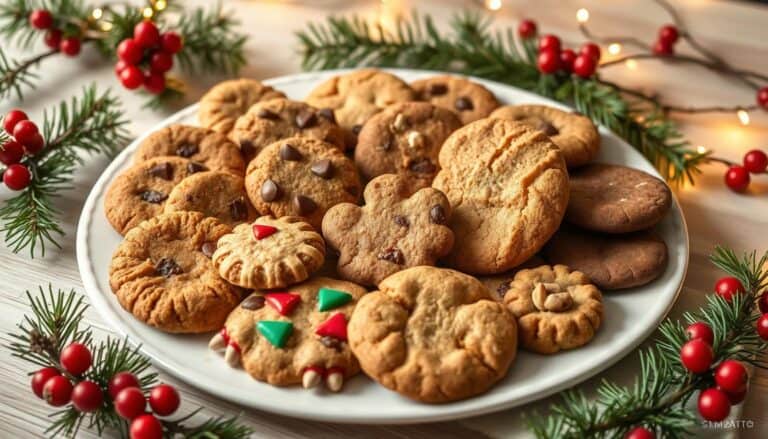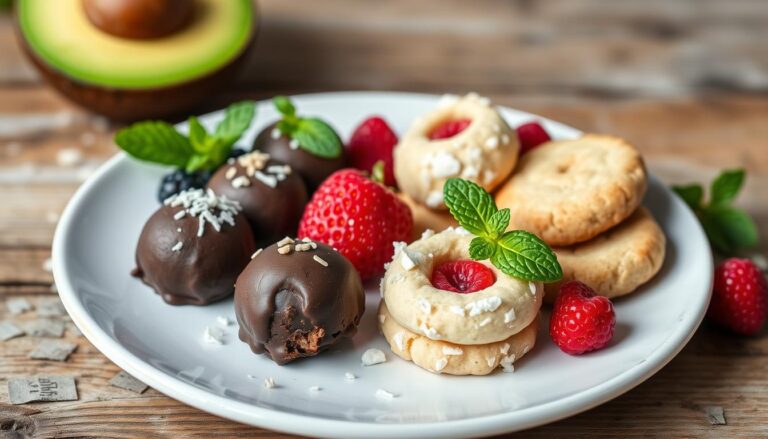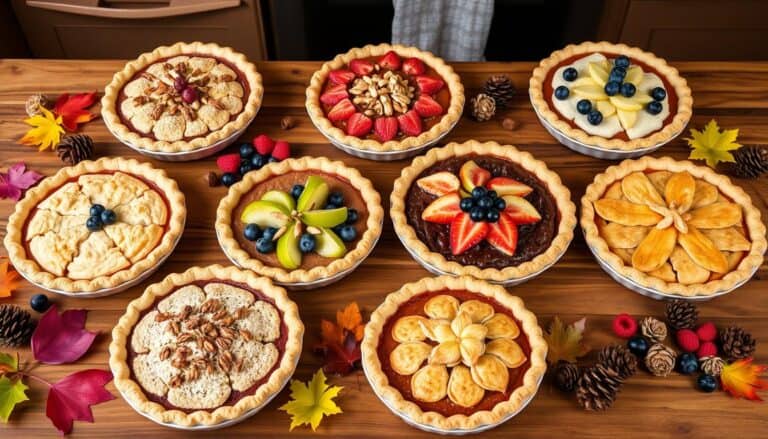Secret Tips for Perfect Paleo Bread
This post may contain affiliate links which means I may receive a commission for purchases made through links at no extra cost to you. I only recommend products I truly believe in. Thank you for your support!
Do you love a delicious grain-free bread that’s both healthy and tasty? Paleo bread is your go-to! I’ve spent years mastering the art of making mouthwatering Secret Tips for Perfect Paleo Bread. These tips will change your gluten-free baking game.
Making paleo bread is more than just swapping wheat flour. It’s a journey of precision, creativity, and learning about new ingredients. Grain-free bread can be surprisingly tasty when you use the right techniques!
My paleo baking journey uncovered some key secrets. From picking the best nut flours to controlling moisture, these tips will make your bread both nutritious and delicious. Say goodbye to dry, crumbly breads and hello to restaurant-quality results in your kitchen!
If you’re following a special diet or just want to eat healthier, this guide has you covered. You’ll learn everything you need to become a paleo bread expert. Get ready to take your baking to the next level!
Understanding the Paleo Diet and Bread Alternatives
Exploring gluten-free bread alternatives can change how you eat. The Paleo diet is a new way to eat healthy foods. It’s based on what our ancestors ate.
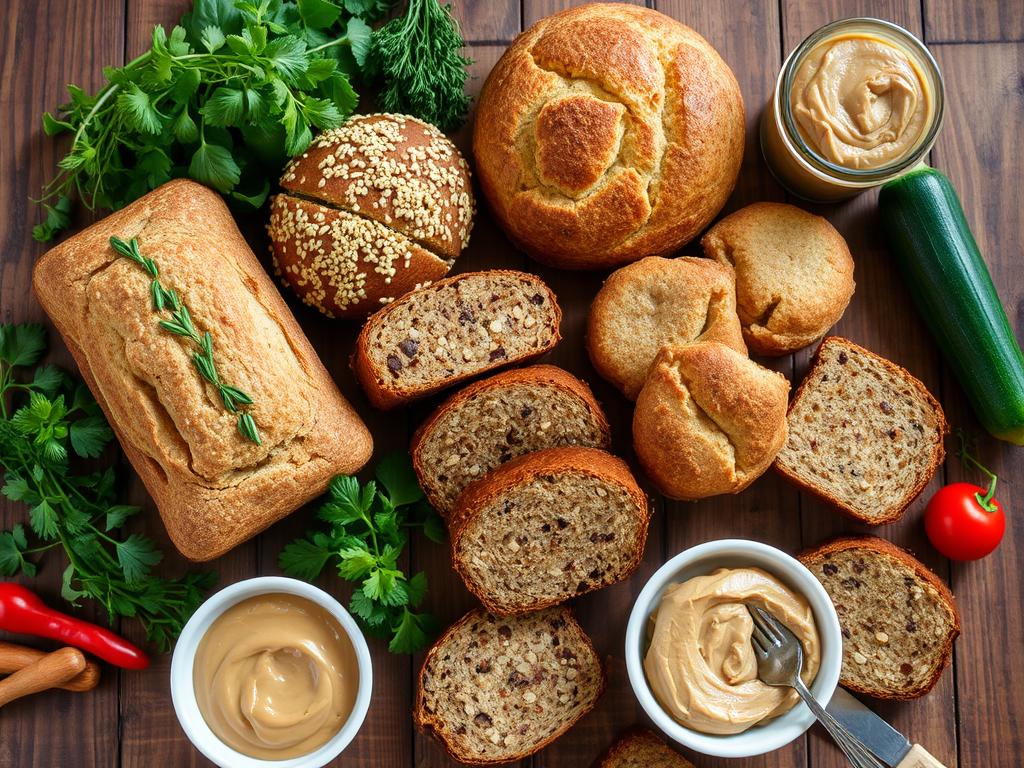
Paleo baking tips open up a world of tasty, healthy food. This diet focuses on whole, unprocessed foods. It’s what our ancient ancestors likely ate.
What is the Paleo Diet?
The Paleo diet is more than a diet. It’s a lifestyle that celebrates natural foods. It includes:
- Excluding processed foods, grains, and dairy
- Prioritizing lean meats, fish, and vegetables
- Incorporating nuts, seeds, and fruits
- Reducing chronic disease risks
Why Choose Paleo Bread?
Paleo bread is a healthy choice. Gluten-free bread made with almond or coconut flour is full of nutrients. It’s great for those who care about their health.
| Nutrient | Per Serving |
|---|---|
| Calories | 248 |
| Protein | 6g |
| Carbohydrates | 20g |
| Fat | 16g |
Choosing Paleo bread means more than just avoiding grains. It’s a choice for better nutrition and overall health!
Essential Ingredients for Paleo Bread
Making the perfect paleo bread starts with knowing the key ingredients. Let’s explore the world of nutrient-rich, low-carb bread. It will change how you bake!
Nut Flours: The Foundation of Paleo Bread
Almond flour bread and coconut flour bread are top choices for paleo baking. These flours are packed with nutrients and add special textures to your bread:
- Almond flour: Rich in protein and healthy fats
- Coconut flour: High in fiber and low in carbs
- Provides a dense, moist texture to low-carb bread
Natural Sweeteners: Adding Subtle Flavor
Goodbye, refined sugars! Paleo bakers use natural sweeteners for flavor:
- Honey
- Maple syrup
- Stevia
Binding Agents: The Unsung Heroes
Binding agents are key to keeping your low-carb bread together. They replace traditional gluten:
- Psyllium husk powder
- Eggs
- Chia seeds
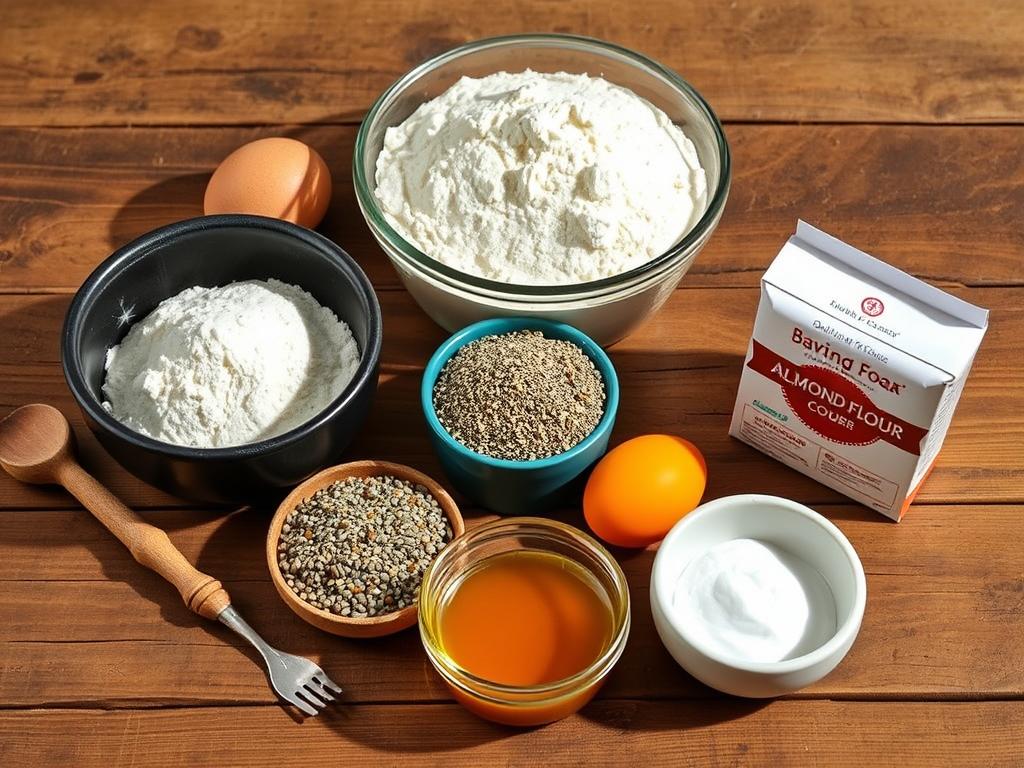
| Ingredient | Calories | Carbs | Protein | Fat |
|---|---|---|---|---|
| Almond Flour (1/4 cup) | 160 | 6g | 6g | 14g |
| Coconut Flour (1/4 cup) | 120 | 16g | 4g | 4g |
| Eggs (1 large) | 70 | 0g | 6g | 5g |
Pro tip: Try different combinations of these ingredients. Find your favorite low-carb bread recipe that’s tasty and healthy!
Common Mistakes When Making Paleo Bread
Making the perfect paleo bread can be challenging, even for beginners. I’ve learned that avoiding common mistakes is key to making tasty, healthy bread alternatives.
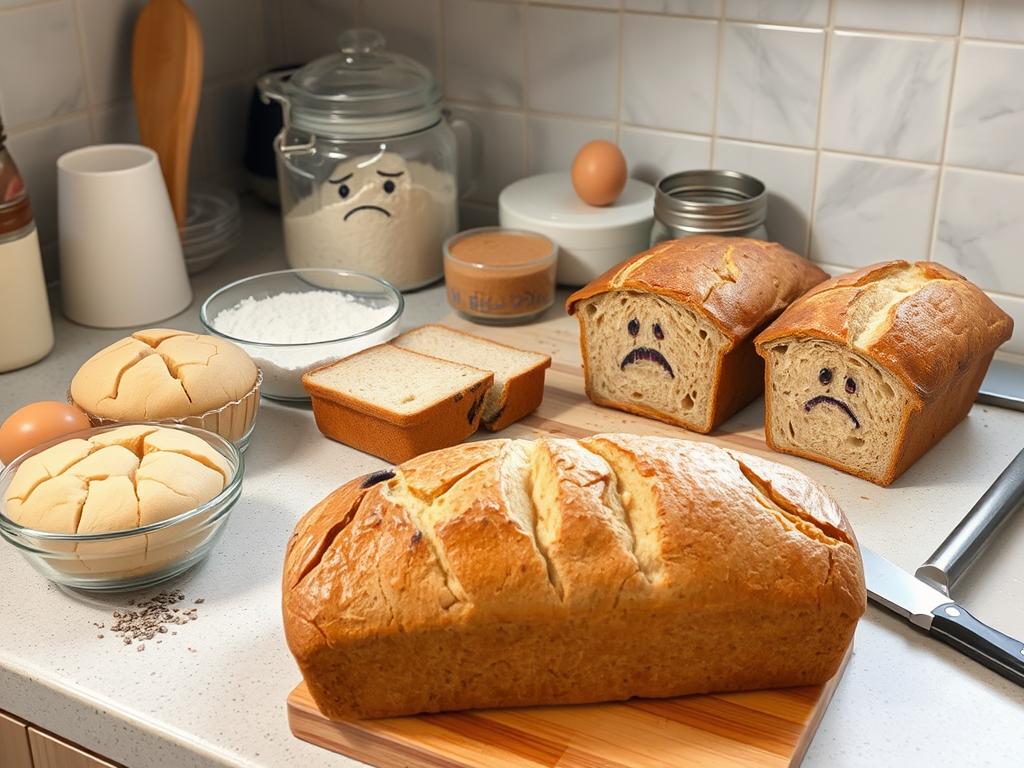
Let’s explore the most common mistakes in paleo baking and how to fix them:
Dough Mixing Mishaps
Overmixing can ruin your paleo bread. Less is definitely more when mixing ingredients. People with gluten intolerance know that alternative flours are delicate and need a gentle touch.
- Mix ingredients just until combined
- Stop when no dry flour streaks remain
- Avoid aggressive stirring that develops tough gluten-free proteins
Temperature Troubles
Baking temperature is crucial for paleo bread. Precision is essential when using alternative flour sources!
- Preheat oven to exactly 350°F
- Use an oven thermometer for accuracy
- Place bread in center rack for even heating
The Importance of Resting
Skipping the resting period is a common mistake. Letting your batter rest helps the flours absorb moisture, making the bread more cohesive and delicious.
Pro tip: Let your paleo bread batter sit for 10-15 minutes before baking. This simple step can make your bread go from good to amazing!
Tips for Achieving the Perfect Texture
Creating the perfect grain-free bread is all about mastering a few key techniques. These secrets can turn your paleo bread recipe into something truly amazing! It’s all about understanding how moisture, ingredients, and baking methods work together.
Mastering Hydration for Moist Paleo Bread
Hydration is the magic ingredient in Secret Tips for Perfect Paleo Bread. The right liquid balance can make or break your grain-free bread texture. Here are some hydration strategies to keep in mind:
- Use almond flour, which absorbs moisture differently than traditional wheat flour
- Aim for a 3:1 to 4:1 ratio when combining almond and coconut flour
- Coconut flour absorbs up to 5 times its weight in liquid
Oven Temperature Tricks for Crispy Perfection
Achieving that crispy exterior requires strategic oven temperature management. Most successful paleo bread recipes recommend a standard baking temperature of 350°F (175°C). I love experimenting with a quick high-heat blast to create a stunning crust!
| Technique | Benefit |
|---|---|
| Initial high heat | Creates crispy exterior |
| Steam method | Enhances moisture and crust development |
| Gradual temperature reduction | Ensures even baking |
Pro tip: Add a pan of water to the oven during baking to create steam. This trick mimics professional bakery techniques and helps develop a beautiful, crisp crust on your paleo bread!
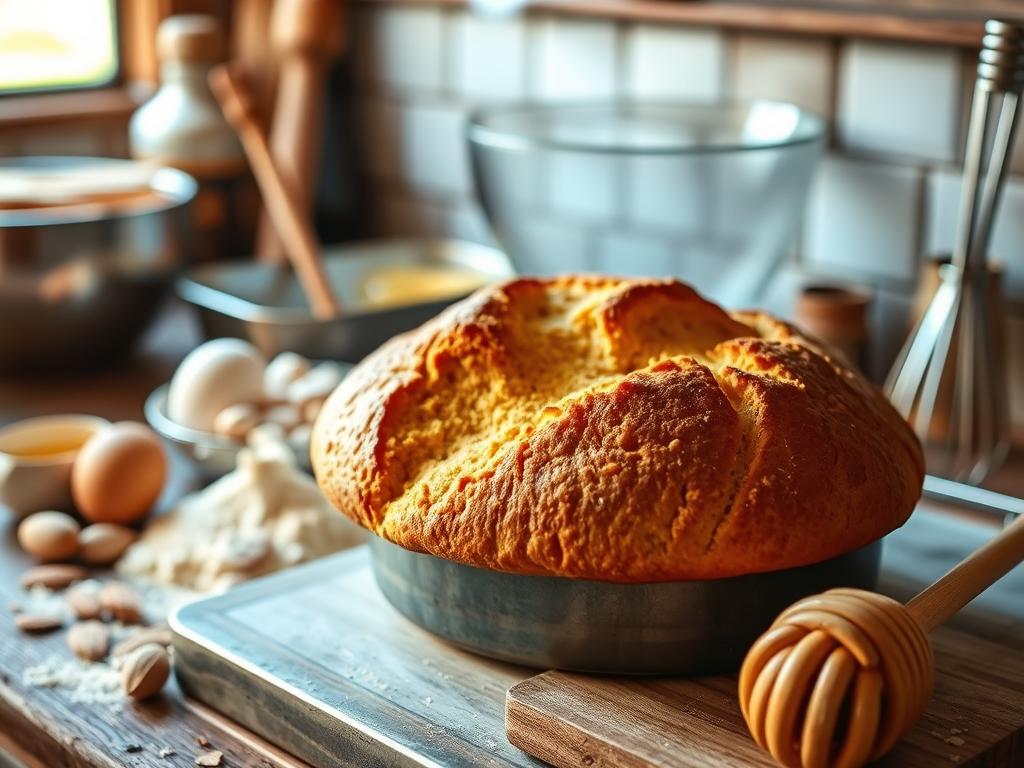
Remember, practice makes perfect. Each batch of paleo bread is an opportunity to refine your technique and create a delicious, grain-free masterpiece!
Flavor Enhancement Techniques for Paleo Bread
Turning your gluten-free bread into a masterpiece is simpler than you think! Paleo baking lets you create healthy, flavorful bread. Let’s dive into some fun ways to make your low-carb bread taste amazing!
Herbal Magic in Your Bread
Herbs can totally change your paleo bread’s taste. Try these:
- Fresh rosemary for a Mediterranean vibe
- Thyme for an earthy taste
- Oregano for a zesty flavor
- Sage for a strong, warm taste
Spice Up Your Paleo Bread
Spices can make your gluten-free bread go from bland to fantastic! Here are some great options:
- Cinnamon for a sweet warmth
- Garlic powder for a savory depth
- Turmeric for color and a subtle earthiness
- Cumin for a smoky taste
Nuts and Seeds: Texture Meets Nutrition
Adding nuts and seeds boosts both texture and nutrition in your bread:
| Ingredient | Flavor Profile | Nutritional Benefit |
|---|---|---|
| Sunflower Seeds | Mild, nutty | High in vitamin E |
| Pumpkin Seeds | Earthy, rich | Excellent zinc source |
| Chopped Walnuts | Buttery, intense | Omega-3 fatty acids |
| Chia Seeds | Subtle, neutral | High in fiber |
Pro tip: Toast your nuts and seeds before adding them. This step makes their flavor stronger and adds a nice crunch to your bread!
Remember, the key to amazing paleo bread is experimentation. Don’t be afraid to mix and match these flavor enhancers!
Storage and Serving Suggestions
Learning how to keep your homemade paleo bread fresh is key. If you plan to eat it soon, keep it at room temperature. It stays fresh for 3-4 days, ideal for quick snacks.
For longer storage, the fridge is your ally. Place your bread in an airtight container. It can last 7-10 days in the fridge. This is great for those with gluten intolerance, as it stays fresh longer than regular bread.
Freezing is another great way to keep your bread fresh. Slice the loaf before freezing. This way, you can thaw only what you need. Wrapped well, your bread can last about 30 days in the freezer. This ensures you always have healthy bread on hand.
When you serve your paleo bread, think outside the box. Turn it into croutons, use it for sandwiches, or make tasty toast. Each slice has 5.5g of protein and just 6g of carbs. It’s a great base for many dishes.
